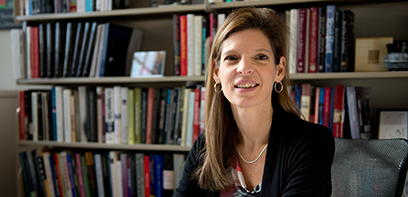Feature Article: Shelley McKellar publishes in the NEJM on the world’s first heart transplant
Fifty years ago this month, South African cardiac surgeon Christiaan Barnard performed the first human heart transplant operation. The front pages of newspapers around the world declared it a “success,” and a “triumph.” In the year that followed, more than 100 heart transplantations were performed in 20 countries, including the Canadian first in May 1968 in Montreal. However, most of the early patients survived only days or weeks.
 “As clinical firsts, Barnard’s . . . heart transplantations played as high drama, seemingly miraculous medical successes that fuelled a media frenzy,” wrote Shelley McKellar, PhD, the Hannah Chair in the History of Medicine at Schulich Medicine & Dentistry, in a recent publication in the prestigious New England Journal of Medicine. “It was hoped that the surgical accomplishment would translate immediately into an effective heart failure treatment, but that outcome was far from certain.”
“As clinical firsts, Barnard’s . . . heart transplantations played as high drama, seemingly miraculous medical successes that fuelled a media frenzy,” wrote Shelley McKellar, PhD, the Hannah Chair in the History of Medicine at Schulich Medicine & Dentistry, in a recent publication in the prestigious New England Journal of Medicine. “It was hoped that the surgical accomplishment would translate immediately into an effective heart failure treatment, but that outcome was far from certain.”
In the publication, McKellar explores what this clinical first meant at the time and what it can tell us about medical innovations across the ages. She is thrilled that a highly regarded journal like The New England Journal of Medicine understands the value of including articles about the history of medicine.
“I think physicians are interested in their history, the history of their profession, our changing understanding of disease, and the history of treatment innovations that they utilize in their practice today. I think it’s interesting for physicians to understand the process by which new ideas get introduced into medicine, the acceptance of these ideas and the role that newspapers and media play,” she said.
McKellar writes that by 1970 the American College of Cardiology encouraged an unofficial moratorium on heart transplantations because of the low survival rates linked to organ rejection and infection.
During the next decade, physicians focused on immunosuppression with drugs like cyclosporine to prevent rejection before resuming heart transplant operations in the 1980s. By 1990, over 4,000 heart transplants were performed in the U.S.
Today, the patient survival rate is almost 90 per cent during the first year, with many heart transplant recipients still alive five and ten years later. The heart transplant program at London Health Sciences Centre is one of the busiest and most successful transplant centres in Canada.
“I think by looking back at previous cases and other clinical firsts, it can help us learn when we might introduce a new cancer drug or surgical procedure, how we can help people frame their expectations, and to recognize that many of these innovations have a certain level of uncertainty,” McKellar said.
She says this particular case of the first heart transplant operations also demonstrates the boldness of physicians and patients who dare to go first.
“To be in that group of the first 100 that underwent this dramatic procedure took tremendous courage,” she said. “Especially in terms of transplanting an organ that is so culturally loaded – this isn’t your spleen or your liver or one of your two kidneys – this is your heart. And to remove your diseased heart and replace it with someone else’s that may or may not start beating again, that takes absolutely tremendous courage.”








